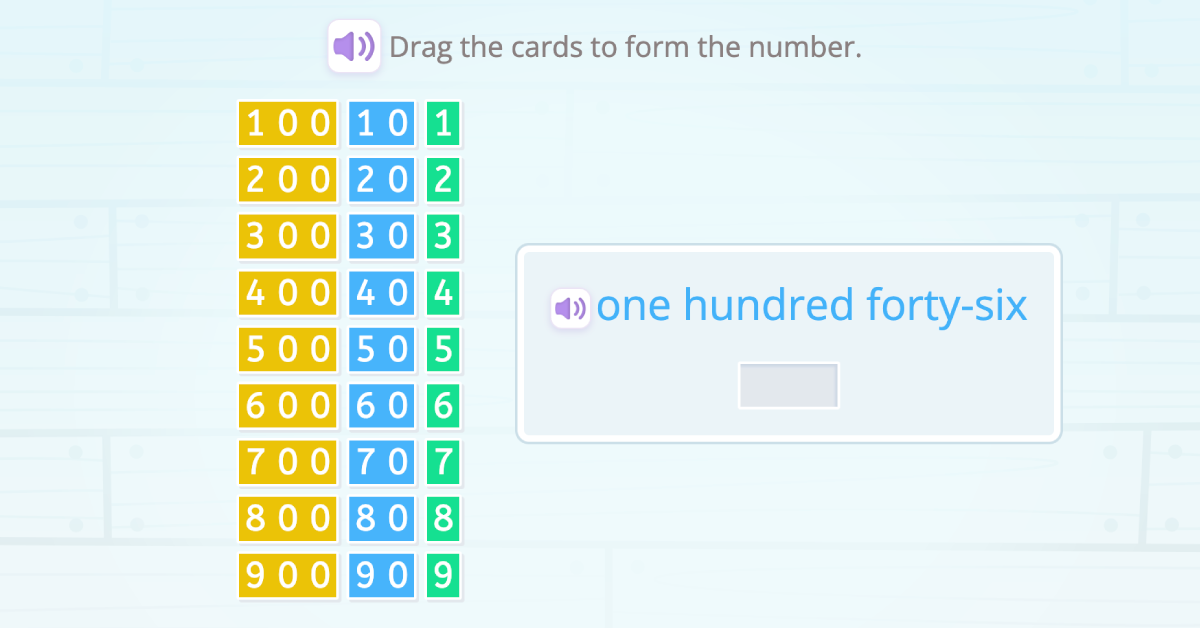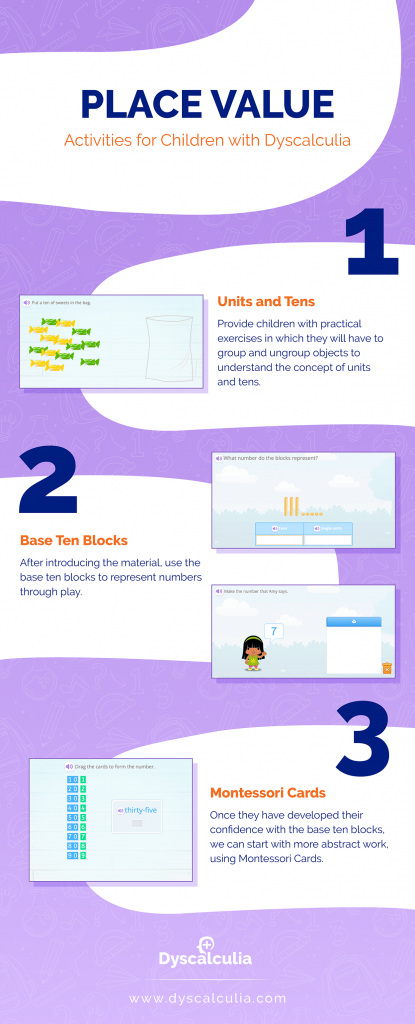Sep28
Dyscalculia Exercises in PDF to Work on Place Value
In today’s article, we will look at the difficulties children with dyscalculia face in understanding place value and how to address these difficulties.
Índice
Place Value
Place value refers to the position of a digit in a number. The rightmost position represents units, the next position to the left represents tens, then hundreds, thousands and so on. For example, in the number 146, the 6 is in the units position, the 4 is in the tens position and the 1 is in the hundreds position. This means that the 6 represents 6 units, the 4 represents 40 (4 times 10) and the 1 represents 100 (1 times 100). By adding these positional values, we get the total value of the number, which is 146.

The concept of place value is fundamental in the understanding and manipulation of numbers in mathematics, since it allows us to represent large quantities and to perform arithmetic operations efficiently.
Dyscalculia and Place Value
Childhood dyscalculia is a specific learning disorder that affects the ability to understand and manipulate numbers and mathematical operations. This means that children with dyscalculia have difficulty processing and manipulating numerical information effectively. This can affect their ability to recognize and understand place value patterns. These difficulties can manifest in numerous ways, namely:
- Difficulty reading numbers: Children with dyscalculia may have trouble reading and recognizing numbers written correctly. This includes difficulty understanding the position and value of each digit in a number. For example, they may confuse numbers such as 12 and 21 due to problems with place value.
- Difficulty performing arithmetic operations: Children with dyscalculia may have trouble adding, subtracting, multiplying, or dividing numbers due to their lack of understanding of place value. This can lead to errors in basic mathematical calculations.
- Confusing large numbers: Larger numbers can be especially challenging for children with dyscalculia, as they have more digits and therefore more places as it relates to place value. This can make it difficult to perform calculations with large numbers.
It is important to keep in mind that specific difficulties may vary from child to child, and not all children with dyscalculia will experience the exact same difficulties. However, appropriate support and understanding are essential to help children with dyscalculia overcome these difficulties and develop their mathematical skills. Early diagnosis and educational interventions are also key.
Dyscalculia Exercises to Work on Place Value
To address difficulties children with dyscalculia face in understanding place value, it is important to provide them with specific interventions and educational strategies. Working on place value with children with dyscalculia requires focus, patience and specific strategies to help them understand and consolidate this concept.
Here are some exercises and activities that may be useful:
- Grouping and ungrouping exercises: Introduce exercises where children have to group (e.g., 5 unit into a ten) or ungroup numbers to understand how units, tens, hundreds, etc. are related.
- Place value blocks: Use blocks or counters to represent numbers. For example, you can use colored counters to represent ones, tens, hundreds, etc. Ask children to build numbers and explain the value of each block. In general, it is important to use manipulatives such as abacuses, counters, dice, and flashcards to represent and manipulate numbers. This allows them to see and touch the numbers and understand how the value changes as they move through the positions.
- Number writing exercises: Ask them to write numbers in different forms (e.g., standard form, expanded form, or words) to practice representing numbers in a variety of ways. Montessori flashcards are a very useful tool for working on number writing.
In the infographic (click on the image to download the PDF) we provide some examples of activities that can be used to work on place value for children with dyscalculia.
Remember to adapt these activities to the age and developmental level of children with dyscalculia, and provide additional support as needed. Repetition and regular practice are key to improving their understanding of place value.
- Dyscalculia Exercises in PDF to Work on Place Value - 28 de September de 2023
- Activities to Work On Dyscalculia: Board Games - 5 de May de 2023
- Dyscalculia Treatment: LEGO building blocks - 19 de April de 2023



